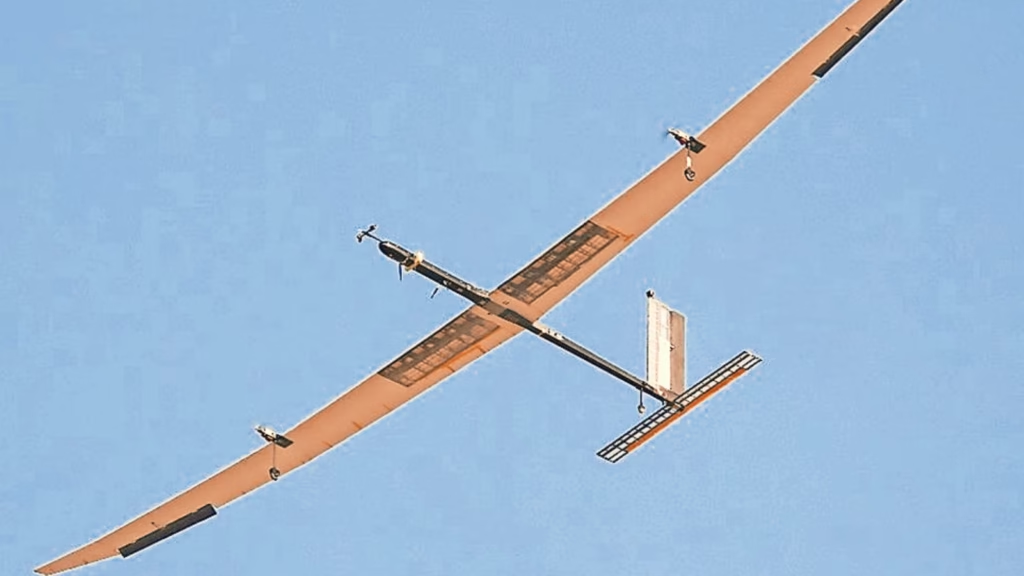DRDO’s Solar-Powered Stratospheric Airship: India’s High-Altitude Edge in Border Surveillance
Published: November 11, 2025 | By DefenceNiti Team

In a bold revival of lighter-than-air technology, the Defence Research and Development Organisation (DRDO) has reignited its ambitious project for a solar-powered stratospheric airship, positioning India as a frontrunner in high-altitude surveillance amid escalating border threats. The prototype’s successful 62-minute hover test at 17 kilometers over Madhya Pradesh’s Sheopur range on May 3, 2025, marked a pivotal milestone, collecting critical sensor data to refine models for full-scale operations. Defence Minister Rajnath Singh lauded the achievement, noting it enhances India’s earth observation and Intelligence, Surveillance, and Reconnaissance (ISR) capabilities, placing the nation among an elite few mastering indigenous high-altitude platforms.
The Technological Leap: Engineering for the Stratosphere
Developed by DRDO’s Agra-based Aerial Delivery Research and Development Establishment (ADRDE), this stratospheric airship operates as a High-Altitude Pseudo-Satellite (HAPS) in the 17-22 km near-space layer, where thin air and extreme conditions demand innovative engineering. The envelope, crafted from ultra-lightweight composites, withstands -60°C temperatures and near-vacuum pressures while minimizing helium leakage for missions lasting weeks or months. Solar panels generate power during daylight, with batteries sustaining nighttime ops, enabling 30+ day endurance without refueling—a game-changer over fuel-dependent drones.
The platform integrates advanced infrared sensors, AI for autonomous decision-making, and real-time data relay, drawing from DRDO’s missile defense expertise. During the test, it carried instrumental payloads to validate pressure control and emergency deflation systems, paving the way for AI-enhanced versions. DRDO Chairman Dr. Samir V. Kamat described it as a “milestone toward long-endurance, lighter-than-air systems,” emphasizing its role in filling the Indian Air Force’s (IAF) ISR gaps amid squadron shortfalls (30 vs. 42 needed) and China’s Y-20 deployments.
Strategic Imperatives: Border Surveillance in a Tense Geopolitics
India’s borders with China and Pakistan demand persistent, cost-effective eyes in the sky. The 2025 Pahalgam terror attack, linked to Pakistan-backed groups, and ongoing Line of Actual Control (LAC) standoffs underscore the need for platforms that outlast drones (limited to hours) and complement satellites (fixed orbits). This airship offers flexible, on-demand coverage over vast Himalayan terrains, detecting intrusions or relaying communications where GPS jamming—seen in Operation Sindoor—poses risks.
For the IAF, it aligns with the Indigenous Stratospheric Tactical Airborne Relay (I-STAR) project, integrating with Rafale jets for hybrid ops. Economically, it’s a fraction of Lockheed Martin’s HALE-D costs, supporting Atmanirbhar Bharat by leveraging ADRDE’s balloon and aerostat experience. Globally, it rivals US, Chinese, and Japanese efforts, but India’s focus on solar autonomy and affordability sets it apart.
Challenges and Future Horizons: From Prototype to Deployment
Weather resilience in monsoons and integration with counter-drone systems remain hurdles, but data from Sheopur trials is accelerating simulations. Future iterations could include regenerative fuel cells for extended loiter times, environmental monitoring, or broadband relay in remote areas. Export potential to Quad allies looms large, boosting India’s defense diplomacy.
As DRDO pushes for full-scale prototypes by 2027, this airship isn’t just tech—it’s India’s vigilant sentinel, ensuring strategic depth in an era of hybrid threats. The revival signals a doctrinal shift: from reactive defenses to proactive dominance in the skies.



